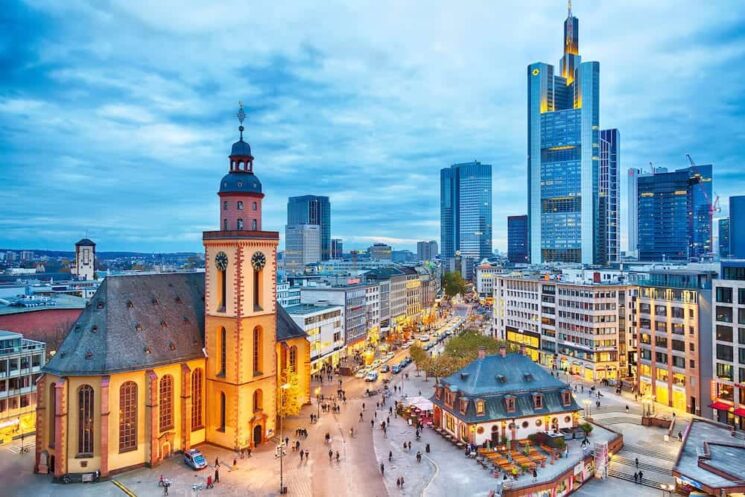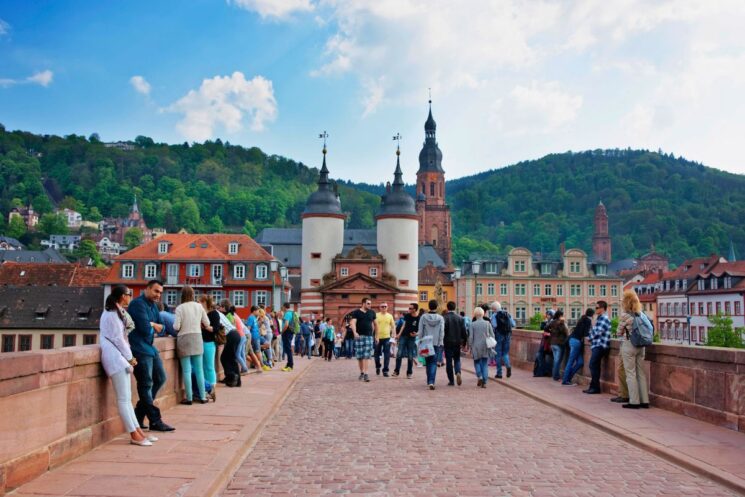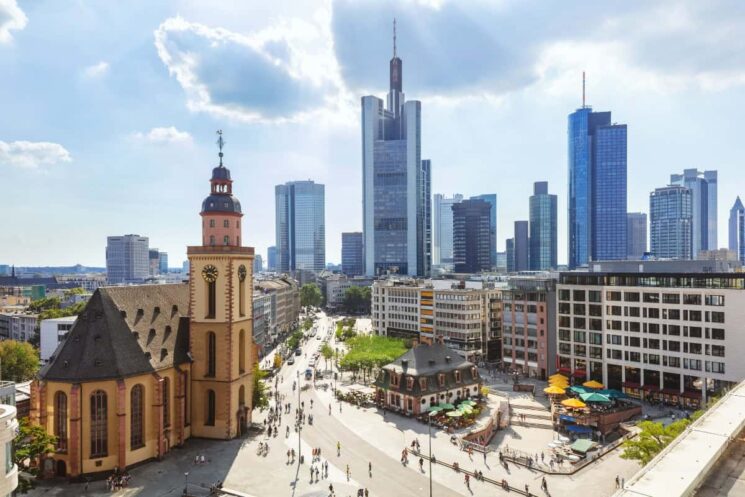Frankfurt am Main is more than its shiny skyscrapers and stock exchange, it’s a city where business and culture meet along the banks of the Main River. For travelers, it offers an efficient mix of historic charm, world-class museums, and lively neighborhoods, all compact enough to fit into a thoughtfully planned itinerary.
Whether you’re here for two days or a week, you’ll find that Frankfurt rewards both planners and wanderers.
Starting in the Historic Heart
The logical place to begin is the Römerberg, Frankfurt’s medieval square. Surrounded by reconstructed timber-framed houses, it gives a glimpse of the city before World War II. The Römer, Frankfurt’s old town hall, still serves ceremonial purposes and is often draped with flags during official events. From here, you’re within steps of St. Bartholomew’s Cathedral, whose Gothic tower you can climb for sweeping city views.
A short walk brings you to the Mainkai promenade, where the river offers fresh air and a perspective on Frankfurt’s unique skyline—medieval spires standing shoulder-to-shoulder with glass towers.
Choosing a base in Frankfurt can define how easy your days unfold. If you want walking access to both the business district and cultural attractions, a smart option is an Apart hotel in Frankfurt: Citadines City Centre Frankfurt.
It provides travelers with the flexibility of apartment-style living while staying in the heart of the city. With easy connections to Messe Frankfurt, the Main Tower, and central transport hubs, it’s ideal for those who want comfort without sacrificing convenience.
Museums Along the Main
View this post on Instagram
Frankfurt’s Museumsufer (Museum Embankment) is a cultural powerhouse. On the south bank of the river, a string of museums lines the promenade. Highlights include:
- Städel Museum – Germany’s premier art museum, home to masters from Rembrandt to Picasso.
- German Film Museum – A fascinating look at the history and craft of cinema.
- Museum of World Cultures – Showcasing traditions and artifacts from across the globe.
Even if you’re not a dedicated museum-goer, this district is worth visiting for the architecture and riverside cafés alone.
Modern Frankfurt and Skyline Views
Frankfurt’s financial district, known as Mainhattan, is both a symbol of the city’s role in Europe and a sight in itself. To experience it properly:
- Main Tower – One of the few skyscrapers with a public observation deck, offering panoramic views.
- European Central Bank headquarters – While you can’t simply walk in, the area around it reflects Frankfurt’s role as Europe’s financial heart.
- Zeil shopping street – A bustling boulevard where futuristic malls like MyZeil mix with traditional department stores.
This is also where the contrast between old and new becomes most vivid, the glass skyline reflecting the spires of centuries-old churches.
Food and Local Tastes
Frankfurt’s food scene mixes hearty Hessian traditions with cosmopolitan flair. Local specialties you shouldn’t miss include:
- Apfelwein (Ebbelwoi) – The region’s famous apple cider, best enjoyed in traditional taverns in Sachsenhausen.
- Frankfurter Würstchen – The city’s namesake sausage, usually served with mustard and bread.
- Grüne Soße – A tangy green herb sauce often paired with potatoes and boiled eggs, especially popular in spring.
For a modern twist, head to Kleinmarkthalle, a bustling indoor market where local farmers and international vendors sell fresh produce, cured meats, and street snacks.
Day Trips and Excursions

Frankfurt’s excellent rail network makes it easy to explore beyond the city:
- Heidelberg – A romantic university town with a ruined castle overlooking the Neckar River.
- Wiesbaden and Mainz – Neighboring Rhine cities known for thermal spas and Baroque architecture.
- Rhine Valley – A UNESCO-listed stretch of river with castles, vineyards, and charming towns like Rüdesheim.
These trips can be done in a single day, returning to Frankfurt by evening for dinner and nightlife.
Neighborhoods Worth Exploring
Every traveler should spend time outside the tourist-heavy core:
- Sachsenhausen – Known for its cobbled streets, apple wine taverns, and relaxed nightlife.
- Bahnhofsviertel – Once notorious, now transformed into one of the most diverse districts, filled with global cuisine and trendy bars.
- Nordend – A quieter area with leafy streets, artisanal cafés, and a more local vibe.
Each neighborhood adds depth to a Frankfurt visit, showing how the city lives beyond its business image.
Evening Entertainment
After dark, Frankfurt shifts gears. The Alte Oper (Old Opera House) hosts world-class concerts, while jazz clubs like Jazzkeller offer intimate late-night shows. For something more relaxed, riverside bars and beer gardens are perfect in warmer months. If you’re looking for nightlife energy, head back to Sachsenhausen or Bahnhofsviertel, where clubs and cocktail bars run late into the night.
Practical Tips for Travelers

- Transport: Frankfurt’s public transport (U-Bahn, S-Bahn, trams, and buses) is efficient. Consider a day pass if you’re moving between districts often.
- Airport access: Frankfurt Airport is one of Europe’s busiest, but only 15 minutes from the city center by train.
- Language: While German is the official language, English is widely spoken in tourism and business areas.
- Best time to visit: Spring and autumn are ideal, pleasant weather, fewer crowds, and seasonal food festivals.
Slower Moments Along the Main
While Frankfurt is a city that thrives on pace, travelers should carve out time for quieter experiences along the Main River. Early mornings here are especially rewarding: joggers passing by, barges gliding along the water, and the skyline catching the first light.
Renting a bike lets you trace the river eastward into more residential areas, where local life unfolds away from tourist trails. Another overlooked option is a river cruise, which offers a different angle of Frankfurt’s blend of medieval and modern.
These slower moments balance the itinerary, turning a busy city trip into something more personal and memorable.
A Balanced City to Explore
Frankfurt am Main is one of those places where efficiency meets culture. It’s a city that doesn’t demand weeks to understand, yet rewards deeper exploration if you stay longer.
Between historic squares, riverside museums, international food, and day trips to the Rhine, it’s a destination that adapts to different types of travelers.
If your itinerary is well thought out, you’ll leave with a sense of both modern Europe and the traditions that built it.

